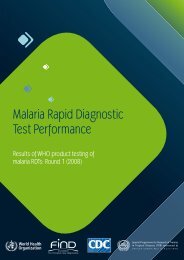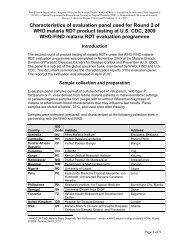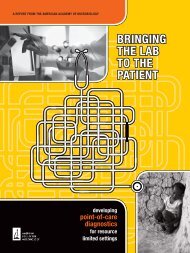MGIT TM Procedure Manual - Foundation for Innovative New ...
MGIT TM Procedure Manual - Foundation for Innovative New ...
MGIT TM Procedure Manual - Foundation for Innovative New ...
Create successful ePaper yourself
Turn your PDF publications into a flip-book with our unique Google optimized e-Paper software.
Section I: Principle of <strong>Procedure</strong><br />
A. Introduction<br />
Demonstration of acid-fast bacilli (AFB) in a smear made from a clinical specimen provides<br />
a preliminary diagnosis of mycobacterial disease, while the isolation of mycobacteria on<br />
culture provides a definite diagnosis of tuberculosis or disease due to mycobacteria other<br />
than M. tuberculosis (MOTT bacilli) or non-tuberculous mycobacteria (N<strong>TM</strong>). As much as<br />
50-60% of AFB culture-positive clinical specimens may fail to reveal AFB on smear made<br />
from the specimen. As a consequence, culture techniques play a key role in the diagnosis of<br />
mycobacterial disease.<br />
Egg-based media, such as Lowenstein-Jensen (LJ) or Ogawa have been used <strong>for</strong> cultivation<br />
of mycobacteria <strong>for</strong> several decades. In 1958, Middlebrook and Cohn described an agarbased<br />
medium to permit more rapid detection of mycobacterial growth. 3 However, it still<br />
required an average of 3-4 weeks to recover mycobacteria from clinical specimens.<br />
In 1969, Deland and Wagner developed a technique <strong>for</strong> semi-automated detection of the<br />
metabolism of bacteria by measuring the 14 CO2 liberated during the growth and<br />
decarboxylation of 14 C-labeled substrate incorporated in the growth medium. 4 This<br />
radiometric technique was widely used <strong>for</strong> blood culture using the BACTEC 460 instrument.<br />
In 1980, this technique was introduced commercially <strong>for</strong> mycobacterial recovery from<br />
clinical specimens and drug susceptibility testing. A large number of clinical trials were<br />
carried out to compare the radiometric BACTEC 460 TB System with solid media <strong>for</strong><br />
primary isolation and drug susceptibility testing. Several evaluations of the BACTEC 460 TB<br />
System published between 1980 and 1985 demonstrated excellent results with significant<br />
time savings, 5,6,7,8.9,10 especially from smear negative specimens. 6<br />
The BACTEC 460 TB System has been reported to yield 15-20% increased culture positivity<br />
of clinical specimens as compared to conventional solid media such as LJ medium, with an<br />
average time-to-detection of positive growth from 8 to 14 days as compared to 3 to 5 weeks<br />
on solid media. The introduction of the BACTEC 460 TB System revolutionized laboratory<br />
testing <strong>for</strong> mycobacteria and has established itself as the gold standard <strong>for</strong> culture and<br />
susceptibility testing.<br />
The high efficiency of the BACTEC TB System is due to the use of liquid medium.<br />
Moreover, a growth enhancing substance is added to the medium to further reduce the<br />
detection time. 11 Since the introduction of the BACTEC 460 TB System, it has been<br />
established that liquid medium is far superior to solid media <strong>for</strong> recovery, time-to-detection<br />
and drug susceptibility testing. Certain species of mycobacteria are reported to grow in<br />
liquid medium only, thus failing to be detected on solid media. 12 In 1993, the Centers <strong>for</strong><br />
Disease Control and Prevention (CDC) recommended that every clinical laboratory must use<br />
a liquid medium to isolate mycobacteria in conjunction with solid media. 13 A follow-up<br />
survey indicated an increasing trend of using liquid medium <strong>for</strong> achieving rapid and<br />
maximum recovery of mycobacteria from clinical specimens. 14<br />
<strong>MGIT</strong> <strong>TM</strong> <strong>Procedure</strong> <strong>Manual</strong> 9




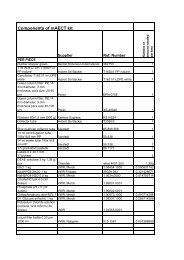
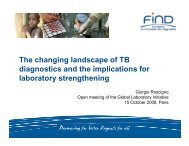
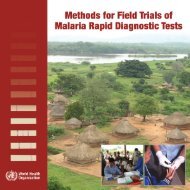
![Download in English [pdf 2Mb] - Foundation for Innovative New ...](https://img.yumpu.com/49580359/1/184x260/download-in-english-pdf-2mb-foundation-for-innovative-new-.jpg?quality=85)

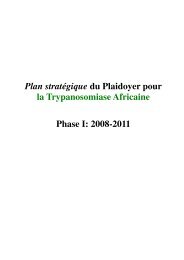
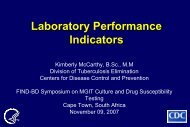
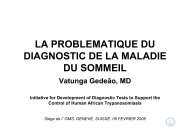
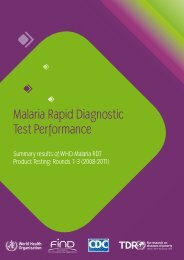
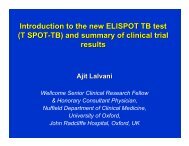
![New laboratory diagnostic tools for tuberculosis control [.pdf]](https://img.yumpu.com/43339906/1/190x135/new-laboratory-diagnostic-tools-for-tuberculosis-control-pdf.jpg?quality=85)
